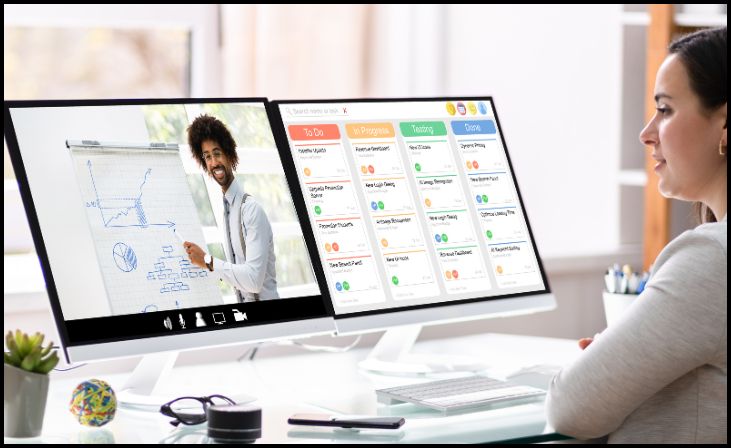Developing an online course is a multifaceted process that requires careful planning and execution. Whether you’re an educator looking to expand your reach or a business aiming to train employees, effective online course development is crucial for engaging learners and achieving your objectives. To help you navigate this journey, we’ve curated a list of the 10 best tips for creating online courses that are engaging, informative, and impactful. From defining clear learning objectives to leveraging interactive content, these strategies are designed to enhance the learning experience and drive positive outcomes. Whether you’re new to online course development or seeking to improve existing courses, these tips will provide valuable insights to elevate your online learning offerings.
10 Best Tips For Effective Online Course Development
1. Define Clear Learning Objectives

Establishing clear learning objectives is essential for guiding the design and development of an effective online course. Learning objectives outline the specific knowledge, skills, or abilities that students are expected to achieve by the end of the course. Clear objectives help instructors create relevant and engaging course content, as well as design assessments that accurately measure student learning. Additionally, clear learning objectives provide students with a clear understanding of what is expected of them and motivate them to stay focused and engaged throughout the course.
Also Read:- Traits of Successful School Leaders
2. Understand Your Audience
Understanding your audience is critical for developing an online course that meets their needs and expectations. Conducting research on your target audience’s demographics, learning preferences, and prior knowledge can provide valuable insights that can inform your course design. By understanding your audience, you can tailor your course content and delivery methods to better align with their preferences and learning styles, ultimately leading to a more engaging and effective learning experience.
3. Choose the Right Content Delivery Method
Selecting the appropriate content delivery method is crucial for engaging learners and effectively conveying course material. Depending on your learning objectives and audience preferences, you may choose to deliver content through text-based materials, videos, interactive modules, or a combination of these methods. It’s important to consider the nature of the content and the best way to present it to ensure that it is engaging and easy for students to understand and retain.
4. Create Engaging Multimedia Content
Integrating multimedia elements such as videos, images, infographics, and interactive quizzes can enhance the learning experience and increase student engagement. Multimedia content helps break up text-heavy materials, cater to different learning styles, and make the course more interactive and dynamic. By incorporating multimedia elements, you can create a more engaging and effective online course that keeps students motivated and excited to learn.
5. Foster Interaction and Collaboration

Encouraging interaction and collaboration among students can enhance the online learning experience and facilitate a sense of community. Discussion forums, group projects, and peer feedback activities are effective ways to promote interaction and collaboration. These activities not only enhance student engagement but also help reinforce learning and deepen understanding through peer-to-peer interaction.
6. Provide Ongoing Support and Feedback
Offering ongoing support and feedback is essential for student success in an online course. Providing avenues for students to ask questions, seek clarification, and receive timely feedback on their progress can help keep them motivated and engaged. Additionally, providing constructive feedback on assignments and assessments can help students understand their strengths and areas for improvement, ultimately leading to better learning outcomes.
7. Ensure Accessibility and Inclusivity
Making your online course accessible to all learners, including those with disabilities, is essential for ensuring that everyone has an equal opportunity to learn. Use accessible design principles, provide alternative formats for content, and ensure compatibility with assistive technologies to accommodate diverse learning needs. By making your course accessible, you can create a more inclusive learning environment that benefits all students.
8. Implement Effective Assessment Strategies
Developing effective assessment strategies is key to measuring student learning outcomes and providing valuable feedback. Use a variety of assessment methods such as quizzes, assignments, and exams to evaluate student performance and provide feedback that is relevant and actionable. Effective assessment strategies not only measure student progress but also help reinforce learning and guide future instruction.
9. Continuously Evaluate and Improve
Regularly evaluating the effectiveness of your online course through student feedback, performance data, and course analytics is essential for identifying areas for improvement. Use this information to make necessary adjustments to your course content, delivery methods, and assessments to enhance the learning experience. By continuously evaluating and improving your course, you can ensure it remains engaging, relevant, and effective for your students.
10. Stay Current with Technology and Trends

The field of online learning is constantly evolving, with new technologies and trends emerging regularly. Staying informed about the latest developments in online learning and incorporating relevant technologies and trends into your course can help keep it engaging and up-to-date. By staying current with technology and trends, you can ensure that your course remains relevant and effective in meeting the needs of today’s learners.
Also Read:- Tips For Creating Blended Learning Environments
Conclusion
Effective online course development is a blend of instructional design principles, technological tools, and a deep understanding of your target audience. By following the 10 tips outlined in this guide, you can create online courses that not only meet but exceed learner expectations. Remember, the key to successful online course development lies in continuous improvement and adaptation to the evolving needs of your learners. Embrace innovation, seek feedback, and stay abreast of industry trends to ensure your online courses remain engaging, relevant, and impactful.
FAQs
How can I ensure my online course content is engaging?
Incorporate multimedia elements such as videos, images, and interactive quizzes to keep learners engaged and interested.
What technology tools are essential for online course development?
Utilize learning management systems (LMS), video recording/editing software, and collaboration tools to create and deliver high-quality online courses.


Leave a Reply